Unpacking the Opposition to the RNZ/TVNZ Merger by Myles Thomas 
First some facts
- The Aotearoa New Zealand Public Media (ANZPM) is much more than just a merger. It creates an improved public media platform, including RNZ and TVNZ, with new media services, platforms and content targeting under-served audiences.
- The government announced an extra $109 million to fund it. $109 million is a lot of money to one person or to a community, but to a nation of 5 million people it is just $22 each. That’s not a “kick in the teeth” to people “doing it hard” in a “cost of living crisis”.
- The obvious reason New Zealand needs the ANZPM is because TVNZ is terrible – endless reality TV, gameshows and vacuous news coverage. New Zealand politics suffers from a lack of in-depth current affairs and documentaries on prime-time. That’s not because TVNZ are evil or useless but because their government shareholder tells them to make as much money as possible. TVNZ are very good at making money by presenting simple and interesting programmes that attract the largest audience possible and serve them to advertisers.
- Another reason is because RNZ has just one audience – middle class, middle-aged Pākehā. This is a bit of a generalisation but it is essentially true. Other New Zealanders also deserve non-commercial radio such as Asian, Pasifika, young people, the regions and so on. For RNZ to serve wider audiences they need the resources to do so, which ANZPM can provide.
- Another reason – international media like Netflix, Amazon, Facebook, TikTok, and YouTube threaten to swamp our state-owned media, bringing misinformation and threatening our unique Kiwi values and accents. A unified ANZPM is a far stronger bastion of New Zealand culture and democracy.
- Another reason is that the ANZPM is more efficient – less buildings, less board members and less duplication. Media converged years ago so being separate makes no sense. No other country in the world has followed NZ’s neo-liberal experiment to split up TVNZ, RNZ and NZ On Air. The opportunities for media to work across joined-up platforms are immense but that won’t happen if they remain separate.
Now the story
How these facts got twisted and swept aside in the “horse race” of political reporting shows why New Zealand so badly needs more public media.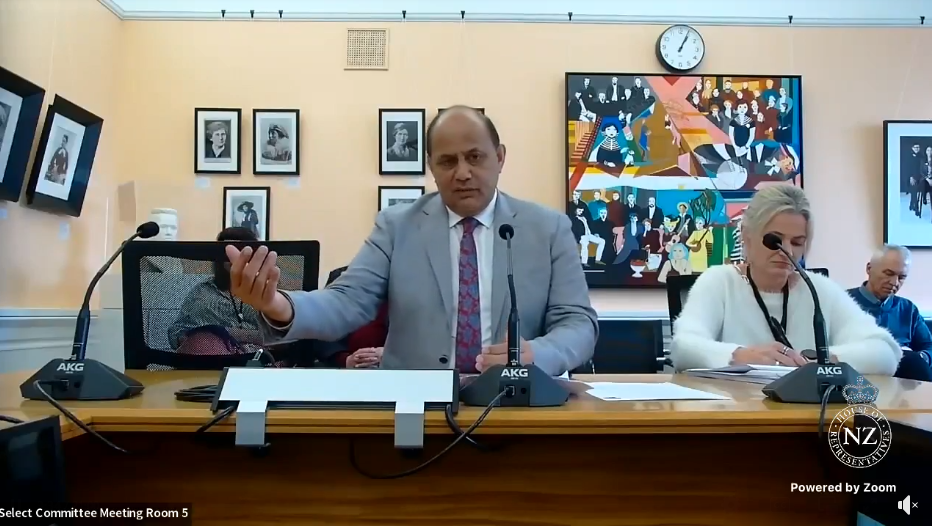
Three months ago, the ANZPM bill was progressing smoothly through Parliament, although on a tight time-frame. On 22 September, the Minister of Broadcasting and Media, Willie Jackson introduced the ANZPM Bill to the select committee with his usual casual bluster.
“The primary driving force here is Public Media,” he said. “So this is going to require a change of culture and a change from, particularly TVNZ, not so much RNZ, well not at all RNZ because RNZ I think get the moral. TVNZ, it’s work in progress, we’ve had a couple of meetings with them, and I think they want the best of all worlds at the moment, but we need them to change their attitudes, we need them to understand what we want which is a cultural change.”
Ironically, he was explaining his desire to change TVNZ’s commercial culture, in answer to a question about editorial control on ANZPM from government. It was an irony picked up on by Melissa Lee who in Parliament a few days later accused the Minister of seeking to exert editorial control over the organisation that he was trying to protect from editorial control.
What Lee didn’t point out was that previous governments’ policy also exerted editorial control on TVNZ by requiring it to return a profit. Demanding TVNZ be totally commercial means its news, current affairs and documentaries don’t bother with the boring but important stuff like examining policies. Instead, TVNZ political coverage is all about who’s-up-and-who’s-down – the pugilistic soap opera of politics. The government’s decision to not fund TVNZ ensures less analysis of government policy and more analysis of the posturing and sound bites. No other country like ours does not fund their national television networks, except for the US.
In Parliament, Jackson then dug himself a new hole by claiming the reason for ANZPM was lack of trust in TVNZ and RNZ. This meant more headlines and clarifications were needed again. This pugilistic to-and-fro was all thoroughly reported and opined upon in our news media. Meanwhile the serious policy concerns with the ANZPM Bill discussed in the select committee received only the most simplified of media attention.
There are many problems with the ANZPM Bill as presented to the Select Committee - lack of oversight, loopholes allowing Ministerial influence, no funding mechanism whatsoever, a confused Charter and no definition of what remains non-commercial in the future. It seems to have been drafted in a rush yet is the product of several years (and millions of dollars) of consultation in working groups, panels and a business case. Vast reports were produced, but it is the Bill that will define the ANZPM, and the Bill is embarrassingly flawed.
No doubt, the Select Committee process can remedy some of these faults. But that then required the industry and audiences to have a lot of faith in the government to fix those faults before it becomes law in quite a short amount of time.
This strategy, or lack of it, has backfired. Commercial news media have done what commercial news media do and covered it in a simplified and sensational way focussing almost exclusively on problems for commercial media. Any other problems with the Bill are largely ignored, along with the positives and purposes of the Bill. This example shows the need for more public media in NZ. 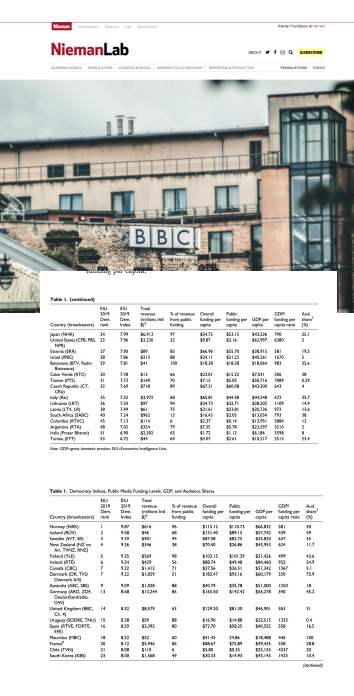 Only RNZ examined the policy issues to any large degree.
Only RNZ examined the policy issues to any large degree.
Melissa Lee’s effective opposition
Like any ambitious politician, Melissa Lee exploited commercial media’s focus on pugilism and simplification, but she has been mildly misleading with it too. For example, Lee repeatedly claimed the government is spending $370 million on the ANZPM implying it’s all setup costs. Lee doesn’t say it’s operational funding rather than establishment funding, and it’s to be paid over three years.
To explain, the government currently spends $140-150 million on public media each year, which per capita is among the lowest in the developed world. The government has budgeted an extra $109 million for the next three years, and $40 million on set-up costs for the ANZPM - $367 million over 3 years. Even with that increase, New Zealand will still spend less per capita on public media than comparable countries.
Another point that news media have missed in the politics of the issue is that Lee’s opposition to ANZPM fails to serve her own constituency. As the only National Party MP of Asian descent and one of only four that are not Pākehā, she presumably represents New Zealanders of Asian descent in her National Party caucus. Yet under her policy, Asian New Zealanders are far less likely to appear in our mainstream media, discussing issues relevant to their ethnic communities or speaking in their original languages. Lee surely realises this since her own production company made Asia Downunder, the only television show ever targeted at Asian New Zealanders. 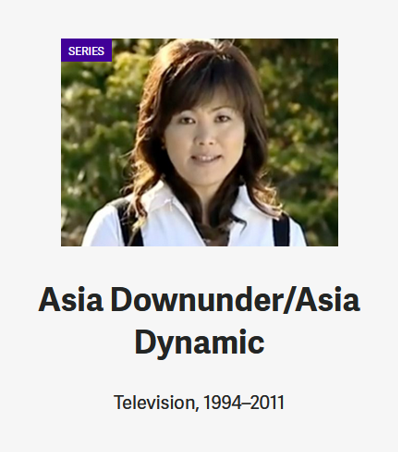
Coincidentally, that show ended in 2011 around the time, her government abolished the TVNZ Charter. I wonder how Asian audiences would feel if they knew they might miss out on their own television, radio and online content because of Melissa Lee.
In November, Lee continued the misleading attacks, asking the Minister if he expected the ANZPM would cost $200 million per year as projected in a report. $200 million equals $40 per person per year. Lee then claimed the government would therefore be forced to pay $6 billion over the next 30 years. This is ‘sort-of possibly’ true but also a ludicrous claim since any annual amount spent for 30 years is always going to be 30 times larger. $6 billion over 30 years is still just $40 per person per year. And because future governments decide what they spend on public media, they cannot be forced to pay anything.
The Tame Interview
The news media focus on the political boxing match went another round in early December after Willie Jackson’s interview with Jack Tame on Q&A, NZ’s only long-form television interview. Again, Jackson was full of bluster and not particularly precise. He made an example of wanting to strengthen small newspapers like the Northern Advocate and Whanganui Chronicle, both of which are part of the strongest news media company in the country, NZME. Jackson went on to suggest the Spinoff needed support negotiating with the tech giants, yet as Tame pointed out, Spinoff already has a deal with them.
Tame, in his commercially successful style of ‘interruptive interviewing’, kept trying to pin Jackson down on the details, and Jackson jokingly complained about it, saying he was disappointed with Tame for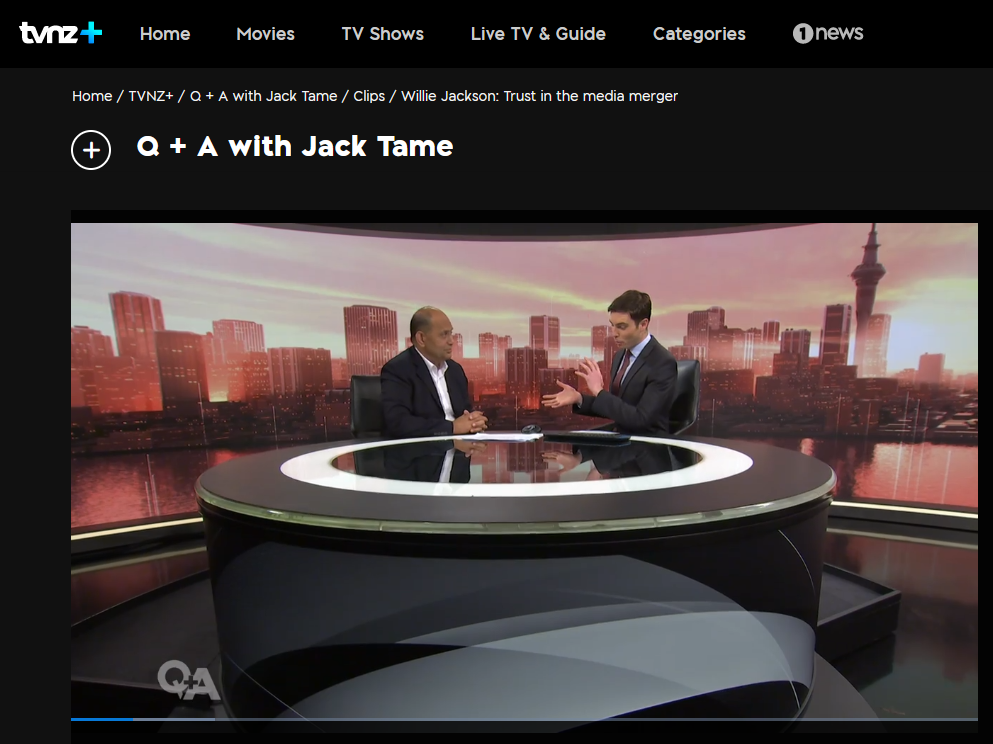 being negative and teasing Tame that he is mates with the National Party.
being negative and teasing Tame that he is mates with the National Party.
Taken out of context, this teasing might have sounded threatening and inappropriate, and that is exactly how they were presented in commercial news media. Thomas Coughlan at NZ Herald was first, making valid points about Jackson’s hopeless performance but twisting his words to seem sinister and threatening. The same angle was traversed at length for days in a stream of opinion-pieces all repeating the same lines, as Jackson apologised for an interview that even Tame thought was pretty tame.
In an effort to say something new, opinion pieces then pushed the story along suggesting the ANZPM might not go ahead because the Minister kept messing up his interviews. This would take the idea of performance over policy to all new heights. If a policy receives very little public examination but is cancelled because the Minister cannot explain it in an interview, it would be a triumph of commercial media determining the government’s work agenda, also known as the tail wagging the dog.
Where was NZ’s only public media on this? Yes, RNZ reported the Tame interview but the same article also discussed the ANZPM policy, with the only reference in any news story to the actual wording of the Bill. And RNZ’s Mediawatch examined in-depth the hoopla and policy itself. Both are examples of how New Zealand’s democratic processes are better served by public media, while commercial media fails us.
Enter Luxon
The furore over the Tame interview was seized on by Christopher Luxon who repeated his talking points on several news media, such as TVNZ Breakfast. He criticised the ANZPM for being an ideological policy, that it was costing $380 million ($10 million more than Melissa Lee for some reason), that for 30 years there’d be an additional $211 million (the $6 billion story), that this would somehow destroy TVNZ’s business model, and that he would demerge the ANZPM if he won the election. 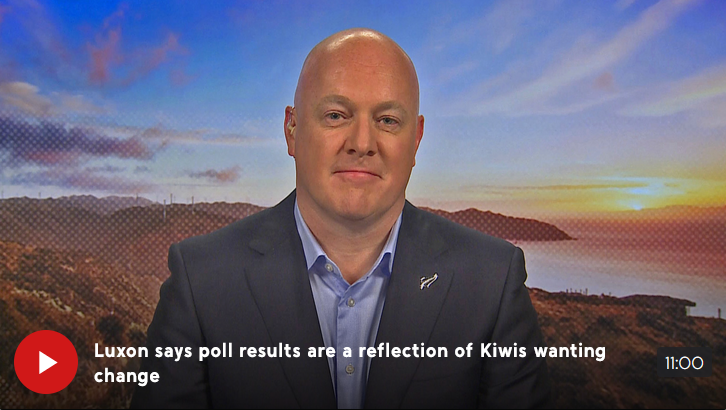
None of the interviewers asked Luxon to explain his $380 million figure, or the $6 billion figure, or what these amounts mean to ordinary New Zealanders ($24 a year and $40 a year). No-one asked why the destruction of TVNZ’s business model would be a bad thing. No-one has asked if demerging the ANZPM would also be an ‘ideological’ policy, or if Luxon would undertake a cost-benefit analysis before doing so.
Luxon’s promise to demerge the ANZPM is actually quite odd. The rationale, avoiding the $6 billion over 30 years, is a hypothesis in the business case which any government can simply ignore. The promise to demerge means Luxon would have to either break his promise, or waste money on an ideological policy with no cost to benefit rationale, exactly what he’s accusing the government of doing.
There’s no denying, Melissa Lee has done a great job at sowing misunderstanding and distrust of the ANZPM. Her battle against increased public media has been assisted by the lack of public media to give it a fair hearing. But the government has let us down as well. Willie Jackson’s bluster, imprecision and unwillingness to get his head around the details has given Melissa Lee ammunition. The previous Minister Kris Faafoi let the process drag on and failed to include sustainable funding in the consultation. The business case has dragged on interminably leaving the government rushing at the crucial legislation and implementation stage.
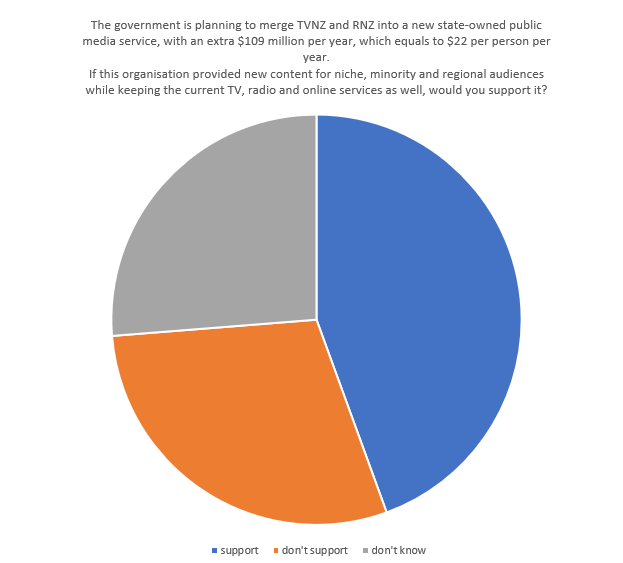 Here at Better Public Media Trust we’ve watched and waited in frustration. We’ve been consulted and made submissions but it has felt superficial and arm’s-length. Especially when the result of it all, the ANZPM Bill was so flawed, and the Minister’s efforts to justify it are so flimsy.
Here at Better Public Media Trust we’ve watched and waited in frustration. We’ve been consulted and made submissions but it has felt superficial and arm’s-length. Especially when the result of it all, the ANZPM Bill was so flawed, and the Minister’s efforts to justify it are so flimsy.
But that doesn’t mean public media is a bad idea. Hopefully, it’s clear from this article that in fact, the whole episode is an example of why we need more public media in New Zealand.
The onslaught of criticism of ANZPM means the government is reassessing its policy over the break. No doubt they’ll consult with members and the public to gauge the mood of the people, much of which is influenced by media.
But our recent poll shows more people support the bill than oppose it. It is likely that support would grow when the ANZPM begins operation in July and New Zealanders can see what it actually is – more intelligent, diverse and entertaining public media.
Hopefully, the government will realise that strong and vibrant public media is in their own best interests, not because it cancels out right-wing bias in commercial media, but because it gives any government a chance to air and discuss issues and policies. It stops facts being swamped by drama, New Zealand culture being swamped by international media, and the dog being swamped by an irrational wagging from its rear quarters.

